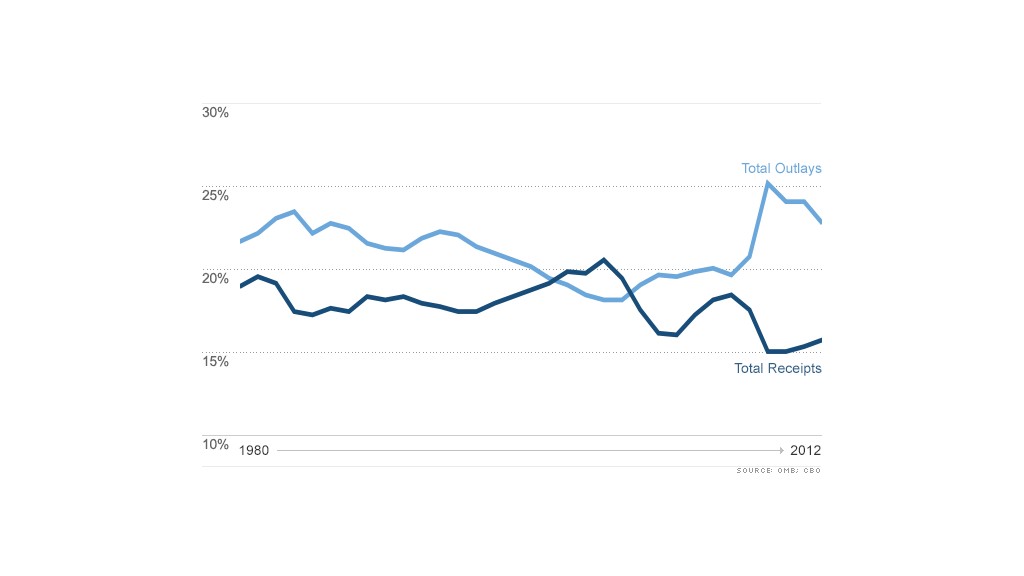
What's to blame for the big growth in federal debt? Republicans blame runaway spending. Democrats blame tax cuts.
Neither is quite right. The fact is both spending and taxes play a role.
Take the past four years. Annual deficits topped $1 trillion. One of the big culprits: The financial crisis and recession. When the economy fell through the floor, revenues plunged to near 60-year lows, while spending rose to near 60-year highs as Congress sought to combat the downturn.
Congress and President Obama also approved large temporary tax cuts and extended old ones.
But those weren't the only causes. "The growing debt also reflects an imbalance between spending and revenues that predated the recession," Congressional Budget Office director Doug Elmendorf noted in Senate testimony last summer.
In other words, tax cuts and new spending that lawmakers don't offset can increase the budget imbalance for years to come.
Looking ahead to the next 10 years, a key reason for anticipated deficits are several measures in the fiscal cliff deal struck over New Year's. That deal made a decade's worth of tax cuts for the vast majority of Americans permanent, and it included other changes that will lighten many Americans' tax burden.
Related: Automatic spending cuts more likely now
Two provisions alone will reduce revenue by an estimated $3.3 trillion: Extending the Bush-era tax cuts for those making less than $450,000 and giving middle- and upper-middle-income families permanent relief from the Alternative Minimum Tax -- also known as the wealth tax.
That $3.3 trillion will likely account for almost half of the expected 10-year deficit between now and 2023. The official estimate will be included in a Congressional Budget Office report due on Tuesday.
Spending will play a role, too, of course. The retiring of the Baby Boomer generation will be in full swing over the next decade. At least 10,000 Baby Boomers are turning 65 every day; by 2030, 18% of the country will be at least 65 years old, up from about 13% today, according to the Pew Research Center.
So Medicare and Social Security costs will go up, while discretionary spending -- which is what funds most government programs other than the entitlements -- is on track to fall to a 50-year low as a share of the economy.
The real takeaway? "Either you're not taxing enough to pay for entitlements. Or you're spending more on entitlements than you're willing to raise revenue for," said Joshua Gordon, policy director of the Concord Coalition, a deficit watchdog group.
Growth in entitlement spending will accelerate after the next decade. The aging of the population will be the major reason for that acceleration over the next 25 years or so, Gordon notes. But then the biggest problem becomes the persistently high rates of growth in health costs, which typically have outpaced economic growth.

The potentially good news is that health care spending has slowed in the past three years, though it's not clear yet how much of the slowdown is due to the recession and how much reflects industry and consumer response to the new health reforms.
One thing is becoming increasingly clear, however.
"Given the aging of the population and the rising cost of health care, attaining a sustainable budget for the federal government will require the United States to deviate from the policies of the past 40 years," Elmendorf noted in a blog post.
There are four tough choices on offer: raise tax revenue well above its 40-year average; make big changes to future seniors' benefits; shrink everything else the government funds from defense to food stamps to education; or, some combination of the above.


